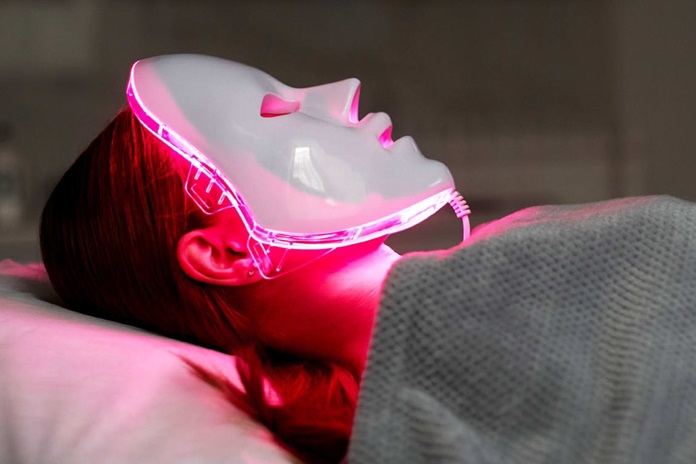Light therapy, also known as phototherapy, involves exposure to specific wavelengths of light at particular times of the day to treat various health conditions, including sleep disorders. The therapy typically uses a light box or lamp that emits bright mimicking natural sunlight, designed to regulate the body’s sleep-wake cycle effectively. It can also help with problems like trouble sleeping, jet lag, and sleep disorders.
In the article, we will explain how light therapy can help people who have trouble sleeping for different reasons, how it works, and you to use it.
More On Light Therapy
The origins of light therapy date back to ancient Egypt, India, and Greece, where they practiced heliotherapy (“sun therapy”) by exposing patients to sunlight to treat mental and physical ailments. Fast Forward to today, and light therapy is still used to treat various mental and physical conditions, including:
- Insomnia
- Circadian rhythm sleep disorder
- Seasonal affective disorder (SAD)
- Jet lag
- Shift work
- Depression
- Alzheimer’s or dementia
Light therapy typically uses a special light box or visor. patients sit in front of this light for a set amount of time at different times during the day. For the light therapy to be effective, the light boxes should have an intensity of about 10000 lux. These lights mimic natural sunlight without the harmful UV rays.
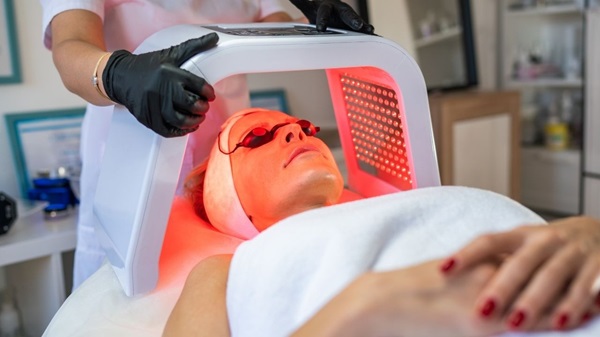
To give you an idea, 10,000 lux is about 100 times brighter than normal indoor lighting, and a bright, sunny day is about 50,000 lux or more. With this intensity, light boxes can be used for just 20 to 40 minutes per session. Weaker light boxes need to be used for longer sessions.
Types of Light Therapy
Light therapy encompasses several approaches tailored to different needs and conditions. Here are the main types of light therapy and their specific applications:
1. Bright Light Therapy (BLT)
Bright Light Therapy is primarily used to treat Seasonal Affective Disorder (SAD), non-seasonal depression, and certain sleep disorders.
BLt involves exposure to bright, full-spectrum light, typically around 10,000 lux, mimicking natural sunlight. This exposure is usually in the morning to help regulate the circadian rhythm and improve mood and energy levels.
2. Blue Light Therapy
Blue Light Therapy is specifically effective for regulating the circadian rhythm and treating skin conditions such as acne.
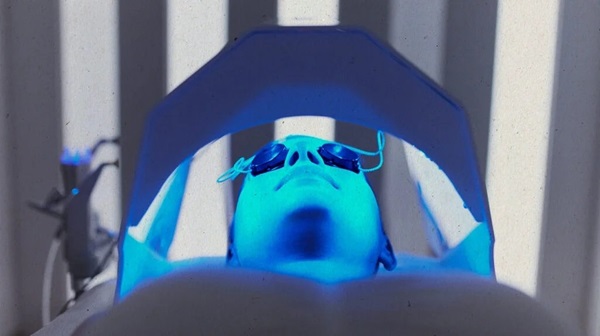
Blue light (wavelengths of 460-480 nm) is particularly effective at influencing the circadian rhythm by suppressing melatonin production, making it useful for conditions like Delayed Sleep Phase Disorder (DSPD).
3. Red Light Therapy
Red Light Therapy is used to improve skin health, reduce pain and inflammation, and potentially enhance sleep quality.
Red light (wavelengths of 630-660 nm) penetrates deeper into the skin than other types of light, promoting cellular repair and regeneration. It is thought to help increase melatonin, which can improve sleep.
4. Dawn Simulation Therapy
Dawn Simularion Therapy aims to mimic a natural sunrise to help individuals wake up more naturally and feel more refreshed.
A dawn simulator gradually increases light intensity over a set period, typically 30-90 minutes, before the scheduled wake-up time. This gradual increase in light helps the body transition from sleep to wakefulness more smoothly.
5. Low-Level Laser Therapy (LLLT)
Also known as cold laser therapy, LLLT is used to promote healing, reduce inflammation, and manage pain. LLLt uses low-intensity lasers or light-emitting diodes (LEDs) to target specific areas of the body. The light penetrates the skin and tissues, promoting cellular regeneration and reducing inflammation.
6. UV Light Therapy
UV Light Therapy, also known as phototherapy, is used primarily to treat skin conditions such as psoriasis, eczema, and vitiligo. This therapy involves exposure to ultraviolet (UV) light, which can reduce inflammation and slow the growth of skin cells.
7. Infrared Light Therapy
Infrared Light Therapy is under for pain relief, muscle recovery, and improving circulation. Infrared light penetrates deeper into the tissues compared to visible light, promoting blood flow and cellular repair.
Also read, Which is better for sleeping?: Soft vs Firm Pillow
Benefits of Light Therapy for Sleep
Light Therapy for Mental Health
Light therapy is a well-known method for treating various mental health issues such as Depression, Perinatal depression, Seasonal affective disorder (SAD), Alzheimer’s and dementia, and Bipolar disorder.
During a light therapy session, the light from the light therapy box reaches the retinal cells in your eyes, affecting the levels of melatonin (the hormone that regulates sleep), which also plays a key role in mood.
Low levels of serotonin have historically been linked to many mental health conditions, including depression, anxiety, sleep problems, digestive issues (since serotonin is found in the gut), panic disorders, schizophrenia, and more.
Although recent studies have questioned the link between serotonin and depression, it remains clear that serotonin is important for mental health and sleep.
Additionally, poor mental health can negatively affect sleep, which in turn impacts mental health, creating a well-documented cycle of poor mental health and sleep issues.
Studies show that light therapy can be an effective way to improve mental health, and consequently, improve sleep.
Light Therapy for Shift Work Sleep Disorder
Shift workers, such as those in medical fields, often work late at night or start their day very early. This irregular schedule disrupts their natural circadian rhythm, leading to insomnia or excessive daytime sleepiness.
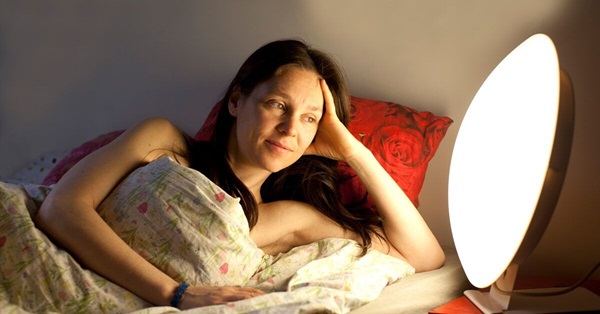
Research shows that light therapy can help shift workers stay alert during their night shifts. Since they usually sleep during the day, they also need to adjust their bedroom environment to match their schedule. Using blackout curtains, for example, can help keep out daylight and promote better sleep.
Light Therapy for Sleep
Even if mental health is not an issue for you, light therapy can help with various sleep problems, including Insomnia, Circadian rhythm sleep disorders, Jet lag, and Shift work sleep disorder.
Light plays a crucial role in regulating your body’s circadian rhythm, which is essentially a 24-hour cycle of sleeping and waking. Light signals the body to be awake, while darkness signals it to start producing melatonin and prepare for sleep.
Factors like jet lag, shift work, circadian rhythm disorders, and insomnia can disrupt this balance. Light therapy helps by delaying the release of melatonin, thus aiding in resetting your internal clock.
Scientifically, light therapy works by stimulating cells in the retina that connect to the hypothalamus, the part of the brain responsible for controlling circadian rhythms.
Activating the hypothalamus at certain times can help restore a normal circadian rhythm, which benefits those struggling with sleep.
Light Therapy for Insomnia
Insomnia is the inability to fall or stay asleep and can be either short-term (lasting a few days or weeks) or long-term (lasting months).
Insomnia can occur for various reasons, including depression, anxiety, stress, a change in schedule, or a new environment.
A 2016 systematic review of over 50 studies showed that light therapy can be an effective treatment for insomnia.
It was particularly effective at higher intensities, for female participants, and for those with insomnia related to Alzheimer’s disease or dementia.
Light Therapy for Circadian Rhythm Sleep Disorders
The same 2016 review found that light therapy was effective in treating circadian rhythm disorders. Circadian rhythm disorders occur when your body’s internal clock, which regulates sleep and wake times, is out of sync with your environment.
This can cause you to wake up too early or feel tired too late. Light is the best tool for adjusting your circadian rhythm to match your environment, making light therapy boxes an effective solution for these disorders.
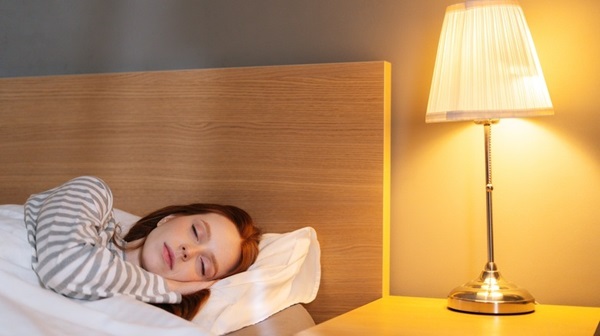
Light therapy is recommended at different times of the day based on your specific issue. If you get tired too early, you might use the lightbox in the afternoon. If you stay awake too late, you’ll use it in the morning.
Consult a doctor to determine the best times and methods for using light therapy to treat circadian rhythm disorders.
Light Therapy for Jet Lag
Jet Lag occurs when you travel across time zones, but your circadian rhythm remains in sync with your original location.
For example, if you fly from New York to Paris, there is a six-hour time difference. So, at 10:00 p.m. in pairs, it will feel like 4:00 p.m. to your body
So, at 10:00 p.m. in Paris, it will feel like 4:00 p.m. to your body, and you might not feel sleepy until around 4:00 a.m. in Paris, which is 10:00 p.m. in New York.
In short, your circadian rhythm will be out of sync with the light and dark cycles of your new environment. Getting outside in the morning and late afternoon/early evening can help your body adjust by signaling when it’s time to be awake and when it’s time to get sleepy. Research shows that light therapy can help speed up this adjustment process.
Can You Do Light Therapy At Home?
The good news is that light therapy is easy and accessible, with various devices available. Instead of looking directly into the light, you position your face about 16-24 inches away from it. This allows you to do light therapy at home while performing other tasks like working, reading, or talking on the phone.
Following light therapy devices are the most common at-home
- Desk lamps
- Floor lamps
- Alarm clocks
- Wearable visors
You should generally choose a light device that emits 10000 lux of cool-white of full-spectrum fluorescent light, with minimal UV light (none is best).
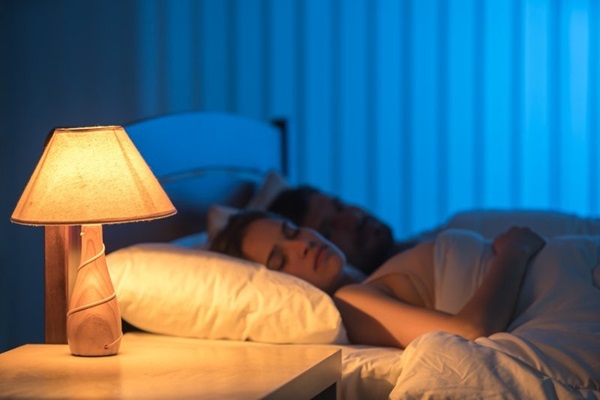
The University of British Columbia recommends starting with 30-minute sessions per day. If you’re using it to help with sleep issues or depression, do it early in the morning right after you wake up.
Position the light 16-24 inches from your face, but follow the manufacturer’s guidelines for the exact distance. Also, don’t look directly at the light as advised by the University of British Columbia.
You can buy a light box without a prescription, but since it can affect your mood and sleep patterns and may have side effects, it’s best to consult a doctor first.
Possible side effects include eye strain, restlessness, headache, nausea, skin irritation, and vision problems. People with bipolar disorder or certain eye or skin conditions may be more prone to these side effects.
Conclusion
In conclusion, light therapy is an effective method for managing various health conditions, particularly sleep disorders. By using specific wavelengths of light, it helps regulate the sleep-wake cycle and improve mental health issues such as depression and Seasonal Affective Disorder. Modern light therapy includes different forms, such as Bright Light Therapy and Red Light Therapy, tailored to specific needs.
The therapy works by influencing melatonin production and the circadian rhythm through controlled light exposure. While it can be used at home with devices like light boxes, it is essential to consult a doctor first due to potential side effects. With proper guidance, light therapy can enhance sleep quality and overall well-being.
Frequently Ask Question
How does light therapy benefit shift workers?
Light therapy can help shift workers stay alert during night shifts and adjust their sleep schedules. Using blackout curtains during the day can also improve sleep quality for shift workers.
Is light therapy effective for treating insomnia?
Yes, studies show that light therapy can effectively treat insomnia, especially at higher intensities and for specific populations, such as those with Alzheimer’s disease or dementia.
Can light therapy help with jet lag?
Yes, light therapy can help reset the body’s circadian rhythm after traveling across time zones, making it easier to adjust to a new schedule.
Can I do light therapy at home?
Yes, light therapy can be done at home using devices like light boxes, desk lamps, floor lamps, alarm clocks, and wearable visors. It is essential to follow the manufacturer’s guidelines and consult a doctor before starting.
What are the possible side effects of light therapy?
Potential side effects include eye strain, restlessness, headache, nausea, skin irritation, and vision problems. People with bipolar disorder or specific eye or skin conditions may be more prone to these side effects.
You may also like to read, Top Four Deep Pocket Sheets
